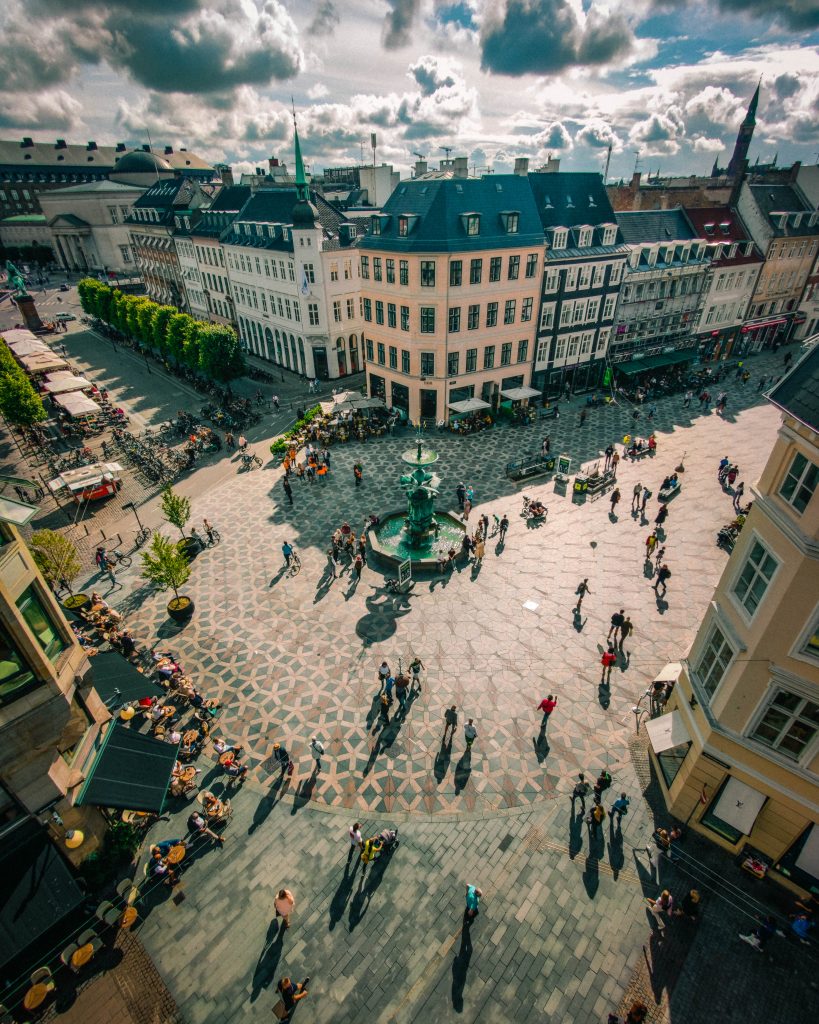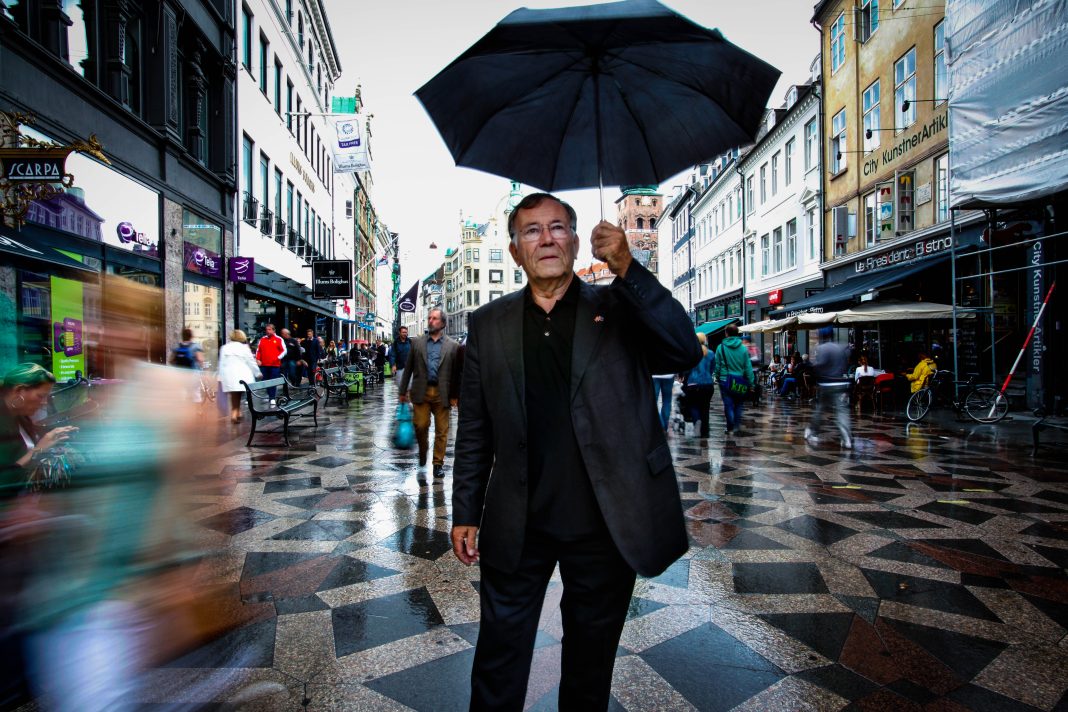Renowned Danish architect Jan Gehl changed our understanding of what urban space should be. Shunning the traditional school of planning in favour of liveable cities, he pioneered the movement of designing places for people. He tells us where this Eureka moment came from and shares the secret to discovering for ourselves what really makes the spaces between buildings thrive.
The imprint of Jan Gehl is found in cities around the world. As CityChangers often tell us, his thought leadership has inspired generations of new urbanists. Jan’s books are the bible of city planners. How is it that an architect trained in the 1950s is still so relevant today? And why, after half a decade, do we still need a nudge in the right direction?
Tech-No Good for People
When Jan graduated from architect training in 1960, the modernist practice in urban design was, he tells us, to create nice patterns as seen from above. This didn’t account for the needs, wants, expectations, or lifestyles of the people inhabiting cities. Modernist architects were, Jan realised, “bloody technocrats”.
“There were some good things about modernism,” he is keen to point out. Their methods did support “physical health because everybody could have a bit of sunshine. And it could be done fast, and it could be mass-produced. But to me, it was really a sign how a little profession could screw up the entire world”. He puts this down to “unfounded theories and visions”.
While working for a small architectural company restoring mediaeval churches, Jan was approached by someone wanting to develop a site for housing that “should be good for people,” not the standard single-family houses and concrete blocks. But there was no precedence. He was at a loss.
“We hadn’t the faintest idea about what was good for people.”
Rethinking Urban Design
Under modernist design, spaces were utilised practically, such as for parking, not for peace, nature, or quality of life.
Creating cities for cars, the expert says, is like building a house but putting all the energy into designing the corridors and ignoring the lounge, kitchen, bedrooms, bathrooms, “where life goes on”. In a city, this is the community.
Jan set out to turn this around: “We had to reinvent the whole notion of spaces as a basic of urban design.”
Together with his wife, a psychologist, Jan conducted field studies in Italy, unpicking traditional practices and learning how to put people first; to ascertain how they interact with places; how form and life, the social and physical worlds converge.
It took off. Jan was invited to continue his research at Copenhagen’s School of Architecture, which he did for 40 years. “And then, at some point, I had to make a company because my wife couldn’t take my students hanging around.” In the year 2000, Jan and Helle Søholt founded Gehl Architects.
A Global Species
Jan Gehl’s observations in pleasant Mediterranean climes were indicative of human systems elsewhere. “We found the same in Greenland, and in New York, and in Scandinavia, and in South Africa.” Jan has seen the similarities in Amman, Oman, and Bratislava.
Culture, climate, diet, beliefs: these things all vary, but what we as people need from a city does not. “We are talking about Homo sapiens, who have the same biological history all over the world.” A walking animal with identical senses wherever we are. As this inspirational architect points out, that means we share common behaviours. City solutions can therefore be rolled out widely, too.
“Of course, in Greenland and Iceland, it’s a little bit more difficult to have a cappuccino on the sidewalk than it is in Italy,” Jan adds somewhat wryly. “But they do it.”
Prototyping Copenhagen
Jan’s native city acted as a testing ground. “We use Copenhagen as our laboratory. Whenever they did some changes, we went over and studied how it worked.” He discovered how the urban form nudged the behaviour of those using it.
“Every time they did something good for people, there were more people.”

For every 14m2 of space that was reclaimed for the people – for example, from car parking – we see one new resident in the city.
“If you make many streets, you get more traffic. But if you’re sweet to the pedestrians, public life, and bicycles, you get more of the good stuff.”
This has proven to be true the world over: Copenhagen, Stockholm, Oslo. In Australian and New Zealand cities, too.
A Liveable City is a Sustainable City
The prognosis is grim:
“We lost the spaces. And we are about to lose the climate. And then the doctors tell us that we are also about to ruin our health with the way we build cities.”
Take cobblestones. These were a cheap resource for lining historic streets, our CityChanger shares. Streets that were built in times when there were few old people. But now, “20-25% of the world’s population are old people hanging around looking for a good life just as the kids are looking for a good time,” Jan adds.

Our expert relays the knowledge that we sit too much, affecting our health and meaning “your old years are lousy”. With life expectancy longer than ever before, we are prolonging our own misery.
Building a city that encourages us, regardless of age, to move under our own muscle power – walking and cycling – gives us a fighting chance. And the climate, by reducing reliance on motorised transport. “Plus, if you build a little bit denser, you can have shared heat solutions, shared garbage collection, shared reuse of materials. There are so many benefits.”
Dense, mixed-function blocks with amenities in the vicinity creates people-centric cities – and self-sustaining bubbles within those cities.
“If you look after people in your city planning, you actually have a better quality of life and better sustainability and less sitting syndrome and a much better city for the young and the old.”
Beauty On the Outside
What gets Jan’s goat are the reality real estate TV shows where middle-class couples looking for a new home are shown a bunch of immaculate houses. They judge it on the décor, ignoring what’s relevant – everything outside.
In his planning, Jan ensures developments include attractive spaces between buildings “so that you are tempted to walk more, to spend more time in the shared spaces”. Even to go shopping rather than “having a bloody delivery van coming and throwing it on your front door”.
This was the basis for Jan’s first book: Life Between Buildings, a staple for young urbanists.
The clue to success is offering residents a subtle yet good quality “invitation”: a tool for improving their lives. Give flats a balcony, and people will use them. Provide 50 car parking spaces, and it will be filled with 50 cars. But build in bike parks and safe walking paths… you get the idea. Jan has discovered that it really is that predictable.

Liveable City Skills
We ask Jan how he went about gathering the information needed to truly understand our needs from a city. After all, he started from scratch.
“I use the architectural tools, which are observing, making sketches making notes, systematising my data.”
Surveys he leaves to the sociologists. And he does collaborate with researchers and other professionals. But, our expert says, we can tell a lot just from watching people vote with their feet and finding patterns in that.
“Go to a place, where it’s nice, and try to find out how it is used. Then go to another place which does not work, and you can right away see why it’s not working. You don’t have to ask people, because in the bad place there are no people, in the good place there are 10 times more people. That’s easy to count.”
Still Going Strong
Jan Gehl has retired twice; a fact that he claims is a secret hidden from his wife! Yet, he shows no sign of slowing down, still giving lectures, publishing books, and consulting on projects in international arenas, from Iceland to Saudi Arabia and to Slovenia. In 2023, he intends to address 10,000+ peers at the International Union of Architects conference for the country’s Year of Architecture.
“That’s the kind of thing which keeps me active at the moment.”
Even while the war continues to ravage Ukraine, Jan is involved in discussions about how to rebuild when peace returns. “I think that’s a fantastic, important question.” Creating cities where life thrives seems never to have been more necessary.
Liveable Cities in a Nutshell
From the icy plains of the arctic circle to the humid tropics, and cities skimming deserts, our human needs are universal. This is also true of making cities liveable. Tapping into that was fundamental for Jan Gehl in changing how we approach urban design. Simple observation tells us a lot about what people gravitate towards – let’s do more of it. By building cities that influence our behaviour for the better, we can improve health, equity, the environment, and citizens’ happiness well into our twilight years. And if we do, maybe we too can create a legacy as worthwhile as Jan Gehl’s.
Editor note: we were sorry that Jan Gehl was unable to attend the Urban Future 22 conference in Helsingborg as planned and thank him for the interview that led to this article.


